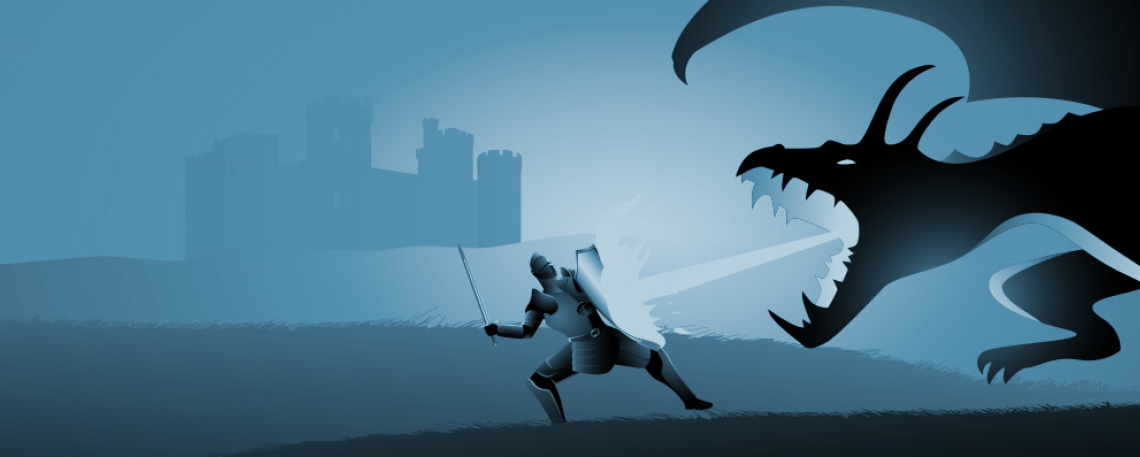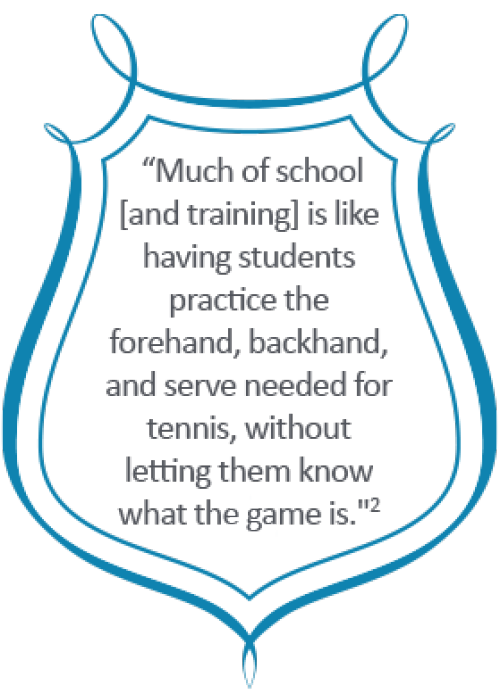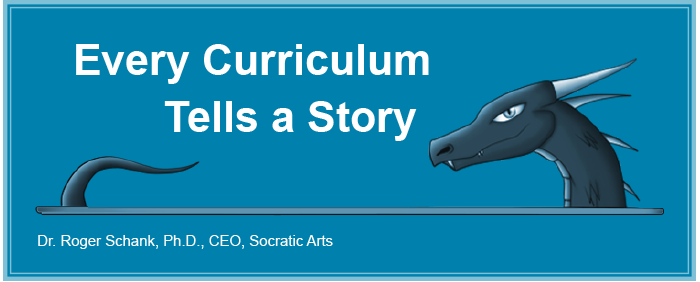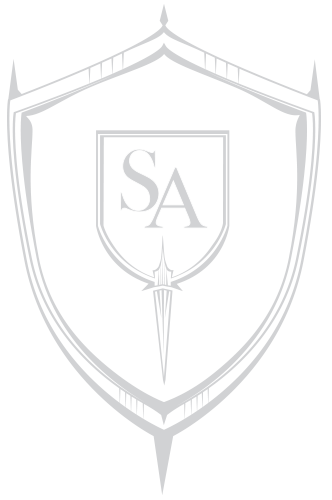

THE SCIENCE OF LEARNING SERIES
ARTICLE 2 | JUNE 2022
Tammy Berman, Ph.D., Senior Vice President of Design | Ray Bareiss, Ph.D., Senior Vice President
My client frowned, studying the courses she could leverage for a new learning journey.
"It’s getting a little…frustrating – I mean, challenging, to make new courses by curating modules and materials from other courses. They just – they aren’t a perfect fit."
I nodded and agreed. I’d come to the same conclusion.
It’s a frustration many of us confront when trying to build learning journeys that leverage "all the courses that already exist." The desire to reuse content makes sense. It’s efficient – a lot of time, effort, and expertise has been put into those materials. As companies look to standardize curricula and learning journeys for regions of the world or even globally, of course they want to leverage what they already have.
But then the challenge begins: Learners who are training to do a job well require a holistic view of the job to be done, as well as deep dives into specific skills. And yet, the leverageable modules and materials often tackle the required skills in bits and pieces, topic by topic. Learning professionals often are left with a constellation of fragments that don’t provide a holistic perspective.
Subject matter experts informing the new learning solution often add to the pressure to deconstruct holistic experiences into topics. They will direct learning designers to address a litany of topics grouped into themes. Perhaps experts think in terms of topic lists because learning by topic is how they were taught in school, but that doesn’t mean a topic-based approach will help people learn, develop skills, or create behavior change. In any case, research suggests experts’ thematic perspective doesn’t match that of novice learners 1

As with tennis, a learner needs to try to play in a game setting but also needs to work on skills separately, and then bring those back into the “game.” Interleaving in this way, with gradually increasing complexity, creates effective learning journeys.
As I commiserated with my client about the curation challenge, I was reminded of a white paper Dr. Roger Schank, Ph.D., CEO of Socratic Arts and founder of the Institute for the Learning Sciences at Northwestern University, wrote some years ago to convince university faculty there was a better way to design a professional master’s degree curriculum.
I emailed the white paper to my client, who quickly responded, "I read the first three pages and am hooked! …actually 'LOL'-ing! I really appreciate you finding and sharing this." Her reaction made me think, "We can’t be the only ones experiencing the challenge." The paper is not new, but it’s as timely as ever. We thought others might appreciate it, too.
As for my client and me, we decided that for her project, all the existing courses and materials could be useful as performance support, but little to nothing was usable as complete modules.
Here's why we reached our conclusion: Learning by doing has always been the best way to learn. People need to learn through authentic hands-on practice to develop complete mental models of the task and the complexities of skill application in context. This can be through courses, apprenticeships, or a mix. Once learners have had a robust, authentic experience, they can do more isolated, deep-dive skills practice in more isolated ways as well, but they should apply those skills in context soon afterward.


 nce upon a time, there was a kingdom that was overrun with dragons. The people were terrorized by the dragons, so they decided to build a new curriculum in their finest university to train young warriors in the art of dragon slaying. The university they selected had a faculty that knew many different things that would be of potential use to a dragon slayer, so the faculty met and formed a curriculum committee to establish a master’s degree in Dragon Slaying. The committee drew on all the wisest faculty in the university, so it had faculty from the arts and faculty from the sciences. There were business faculty and law faculty and medical faculty. The engineering faculty was represented and so was the humanities faculty. Surely from such an erudite group, the best and the brightest could instruct those who wished to learn how to slay the dragon.
nce upon a time, there was a kingdom that was overrun with dragons. The people were terrorized by the dragons, so they decided to build a new curriculum in their finest university to train young warriors in the art of dragon slaying. The university they selected had a faculty that knew many different things that would be of potential use to a dragon slayer, so the faculty met and formed a curriculum committee to establish a master’s degree in Dragon Slaying. The committee drew on all the wisest faculty in the university, so it had faculty from the arts and faculty from the sciences. There were business faculty and law faculty and medical faculty. The engineering faculty was represented and so was the humanities faculty. Surely from such an erudite group, the best and the brightest could instruct those who wished to learn how to slay the dragon.
At the curriculum-planning meeting, everyone agreed that each faculty member had something important to contribute. The business faculty was concerned that potential dragon slayers understand how to finance a dragon slaying expedition and know how to create a business plan to market the story and lessons derived from a successful voyage. The engineering faculty wanted to make sure that the student warrior would know how to read maps, build bridges where needed and launch missiles. The humanities faculty realized that dragons could be reasoned with and proposed a course in how to speak Dragonese and how to negotiate with dragons. The legal faculty was concerned with dragon rights and potential lawsuits and suggested a course in law for the neophyte warriors. The arts faculty wanted to make sure that the public would be able to see what the dragon looked like and suggested the use of photography and drawing courses. The scientists wanted to know about the habitats and evolutionary history of the dragon, and therefore proposed teaching a basic course in evolution and biology to the students in the program. The medical faculty was concerned that students might not know how to kill the dragon properly if they failed to understand how dragons were constructed.
As it happened, this university was the most prestigious one in the land. Consequently, its faculty were very busy working on government funded research projects and on traveling around the world giving invited speeches as well as consulting to business. They didn’t really like to teach all that much, and they hated to have to develop new courses because these were a lot of work. They were willing to develop some new courses, but new courses for master’s students were never a priority. They each decided to choose courses from existing curricula that would be appropriate for the novice dragon slayers. In this way, students would get a broad education that would serve them well. When they finished, this was the curriculum they chose:
All agreed that this was very good curriculum indeed, but that it was difficult to cover everything needed in a one year master’s program, so it was decided to make the dragon slaying master’s a two year program. This was the second-year curriculum they agreed upon:
The faculty was very proud of this curriculum, and they agreed it was well balanced and covered everything a student would need to know. A student body of 20 was recruited, and they all graduated two years later, most of them with high honors. They then went out to slay dragons.
Three of them failed to win funding for their expedition, and they went into other fields. Five of the remaining formed a dragon slaying team, but they had great difficulty getting along with each other. One of the members killed another one, and then the rest killed him. The other three ran away and were never heard from again.
The remaining 12 were more successful. They formed three teams of four, were well financed, and got along well with each other. Unfortunately, the first of those teams never could find a dragon to slay, although they did spend a lot of time looking. Eventually they formed a company that trained dragon slayers.
The second team did indeed meet the dragon. Unfortunately, this was because the dragon found them first. They tried to reason with the dragon, but only one of them could remember how to speak Dragonese, since it was a year since the students had taken Introduction to Dragonese. However, the graduate who had been good at speaking Dragonese had been the only student to fail the negotiation course. He succeeded in annoying the dragon greatly by demanding that he not breathe fire while they negotiated. The dragon ate all four members of the team.
The third team did indeed find and do battle with the dragon. Unfortunately, they had never really tried to fight a dragon before, and the dragon was much faster and its flame much hotter than any of them had anticipated. The dragon chased one of the members of the team off of a cliff and then proceeded to melt first the weapons and then the body of a second team member. The last two team members had no idea how they to engage in a battle between the just the two of them and the dragon, so they negotiated a truce. They are now doing public relations for the dragon.
"What went wrong in the dragon slaying curriculum the faculty worked so hard to build?"
For one thing, there was no actual dragon slaying in it. Teaching actual dragon slaying can be very difficult because, among other things, it requires access to an actual dragon. But this was not the only problem. There are other issues that were not addressed by this curriculum. For example, where was the course in teamwork? Where was the course in planning a dragon attack? Where was the course in protecting oneself from a dragon, or enticing a dragon into entering into a vulnerable situation?
" The idea behind the story-centered curriculum (SCC) is that a good curriculum should tell a story."
That story should be one in which the student plays one or more roles. Those roles should be roles that normally come up in such a story. The curriculum is intended to teach the student how to do something. The roles should be ones that a graduate of such a program might actually do in real life or might actually need to know about (possibly because he or she is likely to manage or work with someone who performs that role.)
Stories have been at the center of human consciousness for a long time. People tell stories, and the stories they tell shape who they are. People hear stories and remember those that resonate deeply with them. And people live stories. The stories they live become part of them in a deep way. While we may easily forget everything about a course we took in college, we can hardly forget the roles we have played in real life experiences, especially when those roles went on for a long time and had emotional impact on us. The central argument here is that good education requires good stories—not solely stories that one is told, however. A good education relies upon the creation of stories that a student can participate in and feel deeply about. This means that those stories must take a significant amount of time, that they must include others who are playing roles the student will have to deal with in later life, and that the roles the student plays in the stories must relate to the future roles that the student intends to play in real life.
The SCC is inherently goal-based. The goals are those that a student has for entering school and following a curriculum in the first place. The goals must be those that a student has or might have upon entering a program, typically ones that sound like future job aspirations.
The SCC also is inherently activity-based. The activities that comprise the SCC must relate to long-term goals that the student has and must constitute the tasks people actually perform in the roles student hopes to play in real life. Thus, if the student wants to be an X and in real life anyone who is an X occasionally does Y, then critical in the SCC for X-ing would be making sure that the student did Y. Any story that drove the curriculum to train X-ers would have to make sure that activity Y was performed in such a way and with such frequency as to make sure that the student became proficient at it.
There would also be activities in an SCC that would be less central, Z-ing, ones that a future X-er would need to understand but not regularly perform. Situations that called upon the student to deal with issues about Z-ing would need to come up in the SCC but would not be central to it. These we call events.
In order to understand how to build an SCC we need to understand its components. To do this, we return to dragon slaying. What would building a good dragon slaying curriculum entail?
| Step 1. | Determine the career-goals of the student. |
| Step 2. | Determine the key activities that comprise the life of a person who has achieved the goal to which the student aspires. |
| Step 3. | Determine what key events might occur in the life of a person who has achieved such a goal. |
| Step 4. | Come up with a story all the above fit neatly within. |
| Step 5. | Determine what things a person entering the curriculum would need to know that are not particularly part of the story per se. |

The story would be about a distinct attempt to slay a particular dragon. The student would be part of a dragon slaying team, which would prepare for the big event by learning to do small parts of the overall task and by practicing on simulated versions of the task that have been simplified in critical ways. In this way, when a student attempts to slay an actual dragon for the first time, he or she will be part of a team of student dragon slayers advised by more experienced dragon slayers
During the simulated voyage, obstacles would be thrown the student’s way that he or she may not have anticipated. These obstacles could be overcome by good reasoning and planning with the help of a tutor; by working out a plan with the student’s team that divides up the roles; by special purpose just-in-time courses that have been prepared to help students who have encountered obstacles; or by the faculty suspending time and going back to remedy any holes in a student’s knowledge. When a student finally slays the simulated dragon, he or she is certified a Master Dragon Slayer and is ready to encounter real dragons on his or her own.
A story-centered curriculum therefore starts with the determination of what the story will be. Then, within the context of that story, faculty decide upon simplified mini-voyages and sub-tasks. The faculty must decide which courses exist apart from the story and which of those are prerequisites, just-in-time, or parallel courses that enhance the student’s ability to play his or her role in the story but are not part of the story itself. The faculty must determine where mentored planning and reasoning courses fit in, and they must select obstacles in the simulated voyage that might present an opportunity to teach something of significance that is not directly part of the story. Finally, the faculty must determine not only the storyline, but also the denouement: that moment when the student knows he or she has won.

When an integrated story has been created, it is the job of the course designers to determine a set of tasks to be accomplished, and to decide how students are to be taught to do the assigned tasks. This is where the traditional notions of teaching get changed.

CEO

Senior Vice President of Design

Senior Vice President
Science-based learning that improves performance.
Contact Us©2024 Socratic Arts, Inc.